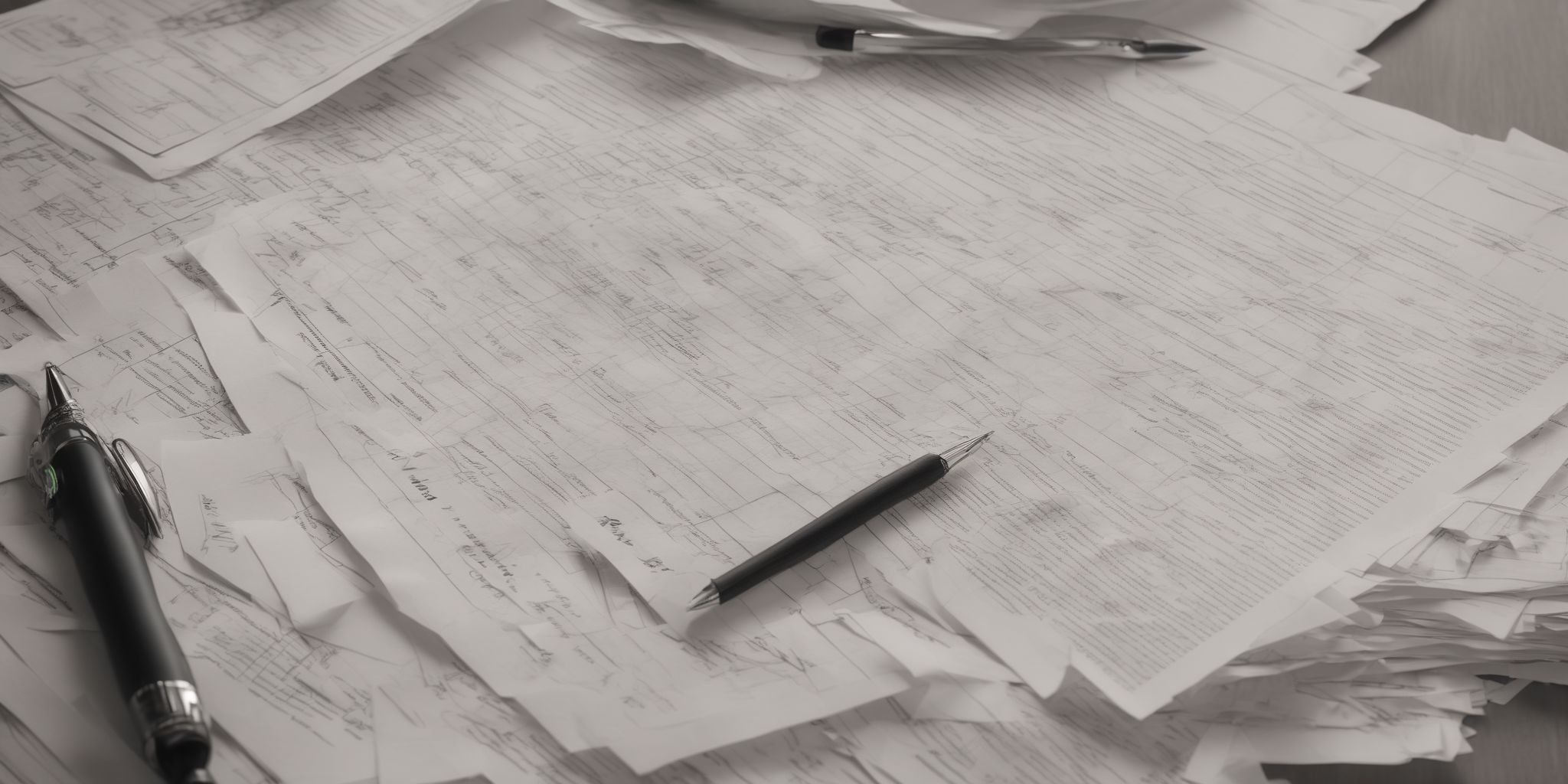Understanding Unsecured Loans and APR: What You Need to Know
Are you considering taking out a loan but find yourself overwhelmed by the array of options available? Don't worry, you're not alone! With so many financial terms and jargon thrown around, it's no wonder that understanding unsecured loans and their accompanying Annual Percentage Rates (APR) can seem like navigating through a maze. But fear not, dear reader!
In this article, we'll unravel the complexity, demystify the lingo, and equip you with the knowledge you need to make informed decisions about your borrowing options. So, let's dive in and unlock the secrets behind unsecured loans and APR – empowering you to take control of your financial future!
What are Unsecured Loans?
Definition of Unsecured Loans
Unsecured loans are a type of loan that does not require collateral. Instead, lenders approve these loans based on the borrower's creditworthiness and income. The absence of collateral means that if you default on the loan, the lender cannot automatically seize any of your assets.
As a result, unsecured loans generally come with higher interest rates compared to secured loans. Examples of unsecured loans include personal loans, credit card loans, and student loans. It's important to carefully consider the terms and interest rates of unsecured loans to ensure they fit within your budget and financial goals.
Key Features of Unsecured Loans
Unsecured loans have distinct features that make them attractive to borrowers.
Firstly, these loans do not require collateral, which means you don't have to provide an asset as security. This makes them accessible to a wider range of individuals, including those who don't own valuable assets like a house or a car.
Secondly, the application process for unsecured loans is usually quicker and less complex compared to secured loans. This allows borrowers to access funds faster when they're in urgent need. Lastly, unsecured loans often offer flexibility in terms of how the funds can be used, providing borrowers with the freedom to handle various financial needs such as debt consolidation, home improvements, or unexpected expenses.
Benefits and Drawbacks of Unsecured Loans
- Benefits:
- Flexibility: Unsecured loans offer flexibility as they can be used for various purposes such as debt consolidation, home improvement, or personal expenses.
- No collateral required: Unlike secured loans, unsecured loans do not require any collateral, eliminating the risk of losing assets.
- Quick approval: Unsecured loans usually have faster approval processes compared to secured loans, providing prompt access to funds.
- Drawbacks:
- Higher interest rates: Due to the lack of collateral, lenders generally charge higher interest rates on unsecured loans to compensate for the increased risk.
- Limited loan amounts: Unsecured loans typically have lower borrowing limits compared to secured loans, making them less suitable for larger expenses.
- Stricter eligibility criteria: Lenders often require a good credit score and stable income to qualify for unsecured loans, making them less accessible for individuals with a poor credit history.
It's important to carefully consider the benefits and drawbacks of unsecured loans in relation to your financial situation and needs before making a decision.
Understanding APR
Definition of APR
APR stands for Annual Percentage Rate. It represents the yearly cost of borrowing, including both the interest rate and any additional fees charged by the lender. Understanding APR is crucial when considering unsecured loans, as it allows borrowers to compare the true cost of different loan offers.
For example, let's say you are offered two unsecured loans with the same interest rate, but one has a higher APR due to additional fees. In this case, the loan with the higher APR will cost you more over time.
By comparing APRs, you can make more informed decisions and choose the most cost-effective loan option that aligns with your financial goals. Remember, a lower APR generally means lower overall borrowing costs.
How is APR Calculated?
APR is calculated by taking into account the interest rate and any additional fees or charges associated with the unsecured loan. To calculate the APR, these costs are expressed as a yearly rate over the loan term.
For example, if a loan has an interest rate of 10% and a loan term of one year, the APR would be 10%. However, if there are additional fees or charges, the APR will be higher than the interest rate. This allows borrowers to compare the true cost of different loans, making it easier to find the most affordable option. Remember to carefully review the APR when comparing loan offers to make an informed decision.
Importance of APR in Unsecured Loans
The APR, or Annual Percentage Rate, is a significant factor to consider when taking out an unsecured loan. It represents the total cost of borrowing, including interest and fees, expressed as an annual percentage. A higher APR means higher costs for the borrower. By comparing APRs from different lenders, borrowers can find the most cost-effective loan option.
For example, if Lender A offers an unsecured loan at 10% APR and Lender B offers the same loan at 12% APR, choosing Lender A would save the borrower money in the long run. Therefore, understanding APRs empowers borrowers to make informed decisions and potentially save on borrowing costs.
Factors Affecting Unsecured Loan APR
Credit Score
A borrower's credit score significantly impacts the APR they can obtain on an unsecured loan. Lenders use credit scores to assess an individual's creditworthiness and determine the level of risk involved in lending to them. A higher credit score generally translates to a lower APR, as it demonstrates a history of timely payments and responsible financial behavior. Conversely, a lower credit score may result in a higher APR due to the perceived risk of default.
For instance, a borrower with a credit score above 700 may qualify for a more favorable APR than someone with a score below 600. It is wise for borrowers to regularly monitor and improve their credit scores to secure the best possible APR on unsecured loans.
Income and Employment Stability
When it comes to determining the APR on unsecured loans, your income and employment stability have a significant impact. Lenders assess your ability to repay the loan by considering your income level and employment history. Higher income and a solid employment record generally result in lower APRs. For instance, if you have a stable job with a steady income, lenders view you as a lower-risk borrower, leading to more favorable APR offers.
On the other hand, inconsistent income or frequent job changes may lead to higher APRs. It's crucial to showcase a stable income and employment history to secure a lower APR on unsecured loans.
Loan Amount and Loan Term
The loan amount and loan term are two important factors that can impact the APR on unsecured loans. Generally, larger loan amounts and longer loan terms can lead to higher interest rates and APR. Lenders consider these factors as they assess the risk involved in providing the loan. For example, if you borrow a larger sum, the lender may view it as a higher risk, leading to a higher interest rate. Similarly, longer loan terms can be riskier for the lender, potentially resulting in higher APR. When applying for an unsecured loan, it's important to carefully consider the loan amount and term to ensure you are comfortable with the associated APR.
Lender's Policies and Loan Options
Lenders' policies and loan options significantly impact the APR of unsecured loans. Each lender sets their own criteria and terms, which can lead to varying APRs for similar loan amounts.
For example, some lenders may offer lower APRs for borrowers with excellent credit scores, while others may be more lenient toward borrowers with average credit.
Additionally, the loan options available, such as fixed or variable rates, also affect the APR. It is crucial to research and compare different lenders' policies and loan options to secure the most favorable APR for your unsecured loan.
Comparing Unsecured Loan APRs
Researching and Collecting Quotes
Researching and collecting quotes is an important step when seeking unsecured loans with the best APR. By obtaining quotes from multiple lenders, you can compare the different interest rates and terms offered. This allows you to make an informed decision and choose a loan that suits your financial needs. Take the time to explore various lenders online or visit local financial institutions to gather quotes. Consider factors such as the APR, repayment period, and any additional fees involved.
Don't hesitate to ask questions and clarify any doubts before finalizing your decision. This research ensures you find the most cost-effective loan option available.
Understanding the Total Cost of Credit
Understanding the Total Cost of Credit is crucial when considering Unsecured Loans APR. It includes not only the interest rate but also any fees and charges associated with the loan. By carefully examining the total cost, borrowers can identify the most affordable loan option. For instance, a loan with a lower interest rate may have higher fees, resulting in a higher total cost.
Comparing offers from different lenders and calculating the total cost of each loan can help borrowers make an informed decision.
Additionally, considering the loan term and how it impacts the total cost allows borrowers to choose a repayment plan that aligns with their financial goals.
Considering Other Fees and Charges
- In addition to the APR, borrowers should also take into account other fees and charges associated with unsecured loans.
- Origination fees, prepayment penalties, late payment fees, and annual fees can significantly impact the overall cost of the loan.
- Before committing to a loan, it is crucial to carefully review the loan agreement and understand the fine print regarding additional fees.
- Comparing the total cost of credit, including all fees and charges, among different lenders can help borrowers make an informed decision.
- By considering these additional costs, borrowers can better understand the true affordability of a loan and avoid unexpected financial burdens.
Tips to Secure the Best APR
Improving Your Credit Score
Improving your credit score is instrumental in obtaining a favorable APR for unsecured loans. One effective strategy is to make timely payments on existing debts to showcase your financial responsibility.
Additionally, reducing your credit utilization ratio by paying off outstanding balances can significantly enhance your creditworthiness. Regularly monitoring your credit report for inaccuracies and disputing any errors can also positively impact your credit score. Furthermore, avoiding excessive credit applications and maintaining a longer credit history demonstrate stability to potential lenders. By actively working on improving your credit score, you increase your chances of securing a lower APR on unsecured loans.
Shopping Around and Comparing Offers
When searching for an unsecured loan, it's important to shop around and compare offers to secure the best APR. By taking the time to research and collect quotes from different lenders, you can gain a better understanding of the available options and find one that aligns with your financial goals. By comparing the APRs, you can identify the loan that offers the most favorable terms and saves you money in the long run.
Remember to consider other factors beyond APR, such as repayment terms and anyadditional fees or charges. By being diligent in your comparison process, you can make an informed decision and select the most suitable loan option for your needs.
Negotiating with Lenders
Negotiating with lenders is an important step in securing the best APR for your unsecured loan. Start by researching and comparing offers from multiple lenders. Use this information as leverage during negotiations to get the most favorable terms. Be prepared to discuss your creditworthiness and financial stability. Highlight any positive factors that could help you secure a lower APR.
Additionally, consider negotiating other aspects of the loan, such as fees and repayment terms, to further improve the overall cost. Remember, lenders want your business, so don't hesitate to negotiate for better terms that align with your financial goals.
Over to you
Unsecured loans, unburdened by collateral, offer borrowers quick access to funds without the risk of losing assets. However, they often come with higher interest rates due to their nature of being unprotected. Understanding the concept of Annual Percentage Rate helps borrowers to gauge the true cost of a loan, as it not only includes the interest rate but also any additional fees and charges.
Comparing APRs of different loan offers enables borrowers to make informed decisions and select the most suitable option.


